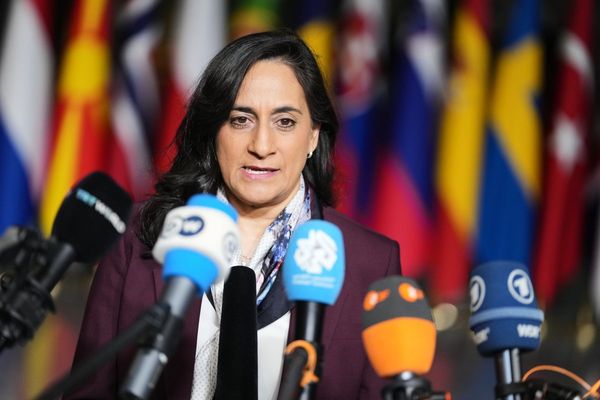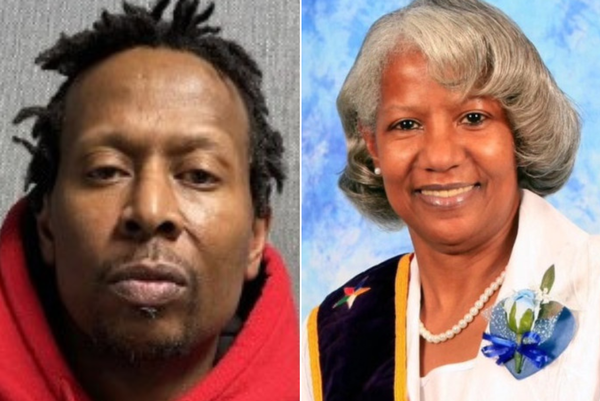
What is happening?
Hundreds of Ukrainian fighters, including wounded men carried out on stretchers, left the vast steel plant in Mariupol where they had mounted a dogged last stand and turned themselves over to Russian hands.
More than 260 fighters left the Azovstal plant — their last redoubt in the southern port city — on Monday and were transported to two towns controlled by Moscow-backed separatists, officials on both sides said. Other fighters — their precise numbers unknown — remain inside the ruins of the fortified mill that sprawls over 4 square mile in the otherwise now Russian-held city.

Azovstal’s fall marks the complete capture of Mariupol, a significant milestone in one of the bloodiest battles of the war.
Footage published over the weekend showed the steelworks being bombarded.
Wrapping up Mariupol’s capture would give Russia an unbroken land bridge to the Crimean Peninsula, which it annexed from Ukraine in 2014, and also deprives Ukraine of a vital port. It could also free up Russian forces for fighting elsewhere in the industrial heartland of eastern Ukraine.
Severodonetsk
Fighting is increasingly focusing on the Severodonetsk, the easternmost city still held by Ukrainian forces after more than 11 weeks of war, and an a effort to complete a wider encirclement of Ukraine’s defending forces in the Donbas appears to have failed.
A smaller-scale encirclement of Severodonetsk also failed last week after Russian forces were defeated with heavy losses in a series of unsuccessful attempts to cross the Siverskyi Donets River at Bilohorivka.
The river is increasingly becoming a dividing line between the two sides in the Donbas – the name given collectively to the Donetsk and Luhansk regions – and around Kharkiv to the north.
What happened in first three weeks of the invasion?
How did we get here?
In the months before its invasion, Russia deployed hundreds of tanks, self-propelled artillery and short-range ballistic missiles from as far away as Siberia to within striking range of Ukraine.
Moscow’s rhetoric grew more belligerent. Putin demanded legal guarantees that Ukraine would never join Nato or host its missile strike systems, concessions he was unlikely to receive. A flurry of diplomatic activity did little to ease tensions.
The second half of February was long considered the most likely period for a potential offensive. Russian soldiers stayed on in Belarus beyond the end of planned military exercises, and the Winter Olympics, hosted by Russia’s ally China, concluded.
The invasion was preceded on 22 February by Putin saying Russia would recognise the territorial claims of self-proclaimed republics in Luhansk and Donetsk. He had already ordered his forces into Russian-controlled territory in Ukraine.
What do we know about Russia’s deployments?
Scores of battalion tactical groups – the smallest operational unit in Russia’s army, consisting of about 800-1,000 troops – were put in place near the borders of Ukraine in Russia and Belarus before the invasion.
As of 18 February, the US estimated that Russia had 169,000-190,000 personnel in and around Ukraine.
An estimated 32,000 separatist forces were already operating in the breakaway areas in Donetsk and Luhansk – some of whom were likely to be unacknowledged Russian forces – before the invasion.
Many of the heavy weapons stationed near Ukraine arrived as far back as spring 2021. Over the new year Russia also began to move tanks, artillery, air-defence systems and fighter jets to Belarus for joint exercises in February. That deployment then grew.

These satellite image composites show the buildup of troops in Yelnya and Pogonovo over the new year.
Satellite photographs also showed increased deployments in Novoozernoye, in western Crimea.
The US estimates that 10,000 troops moved into Crimea in late January and early February.
Satellite images taken on 20 February showed troops and equipment being moved from holding areas to potential launch locations.
How do the militaries compare?
Russia’s invasion pits the Kremlin’s large, recently modernised military against an adversary largely using older versions of the same or similar equipment, dating back to the Soviet era.
Russia has significant numerical advantages on land, and in particular in the air and at sea, although Ukrainians are defending their homeland.
What is the historical context?
In 2014 Putin sent troops to annex Crimea, a mainly Russian-speaking region of Ukraine. Russia also incited a separatist uprising in Ukraine’s south-east, clandestinely sending soldiers and weapons to provoke a conflict that grew into a full-blown war.
A 2015 peace deal established a line of demarcation and called on both sides to make concessions. After that, low-level fighting continued along the front, and each side accused the other of violating the agreement.
Going back further, Russia has long opposed any attempts by Ukraine to move towards the EU and Nato.
One of Putin’s oft-repeated demands was a guarantee that Ukraine would never join Nato, the alliance of 30 countries that has expanded eastwards since the end of the cold war.
What was the role of Nord Stream 2?
On 22 February, the German chancellor, Olaf Scholz, stopped the certification process for the Nord Stream 2 gas pipeline in response to Russia’s recognition of the two self-proclaimed republics.
First announced in 2015, the $11bn (£8.3bn) pipeline owned by Russia’s state-backed energy firm Gazprom was built to carry gas from western Siberia to Lubmin in Germany’s north-east, doubling the existing capacity of the Nord Stream 1 pipeline and keeping 26m German homes warm at an affordable price.
Nord Stream 2, Europe’s most divisive energy project, bypassed the traditional gas transit nation of Ukraine by running along the bed of the Baltic Sea.
It faced resistance within the EU, and from the US as well as Ukraine, on the grounds that it increased Europe’s energy dependence on Russia, denied Ukraine transit fees, and made it more vulnerable to Russian invasion.







